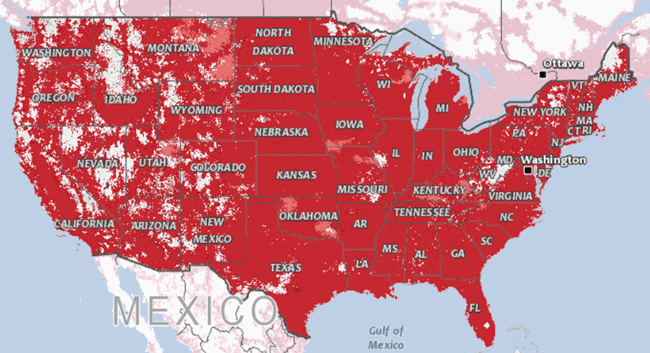Verizon has the most extensive coverage of any U.S. network. A few years ago, Verizon had a significant edge on AT&T in terms of square miles covered, but AT&T has gradually narrowed that gap. While Verizon is usually a better option for people that spend a lot of time in remote and rural areas, AT&T still covers the overwhelming majority of Americans.
AT&T Vs. Verizon – Coverage Critic’s Maps
The coverage map below shows Verizon’s coverage on the left and AT&T’s coverage on the right. Both 4G and 5G coverage are accounted for. Darker shades indicate stronger coverage.
Enter a location in the box below to re-center the map of Verizon vs. AT&T’s coverage:
AT&T Vs. Verizon – Carrier-Published Maps Maps
I pulled snapshots of each network’s map in August 2020. Here’s Verizon’s map:

Here’s AT&T’s map:

When comparing the maps, a few things jump out:
- Both networks cover the large majority of Americans.
- Uncovered areas tend to be sparsely populated.
- The western U.S. has more areas lacking coverage than the rest of the U.S.
At first glance, it looks like AT&T’s map shows more coverage than Verizon’s map. However, AT&T’s national-level map appears to smooth out small areas lacking coverage. Some areas that are solid blue on the national map show patches of white (indicating no coverage) as you hone in on smaller regions.
Other factors
Speeds
By some measures, AT&T’s network has slightly faster average speeds than Verizon’s network. However, there’s still reason to think Verizon does better in terms of offering consistently decent speeds, which is perhaps more important.
Pricing
Speaking broadly, AT&T tends to charge slightly less than Verizon for comparable plans. However, I suggest potential subscribers check the prices they’d pay with each carrier. There are exceptions to the general trend.
